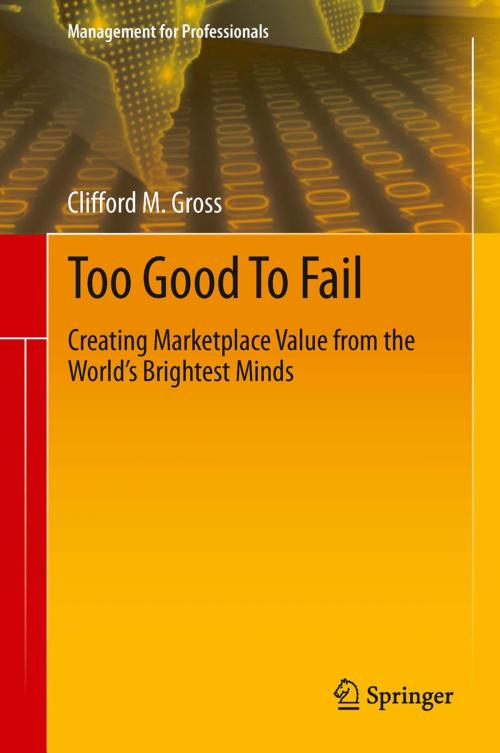Too Good To Fail
Creating Marketplace Value from the World’s Brightest Minds
Business & Finance, Management & Leadership, Production & Operations Management, Business Reference| Author: | Clifford M. Gross | ISBN: | 9783319002811 |
| Publisher: | Springer International Publishing | Publication: | May 15, 2013 |
| Imprint: | Springer | Language: | English |
| Author: | Clifford M. Gross |
| ISBN: | 9783319002811 |
| Publisher: | Springer International Publishing |
| Publication: | May 15, 2013 |
| Imprint: | Springer |
| Language: | English |
Too Good to Fail: Creating Marketplace Value form the World’s Brightest Minds is a guide for senior managers seeking to address their need to rapidly develop globally innovative products with constrained R&D budgets. It creates a practical strategy to address and bring together, for the first time, the emergence of open innovation networks, intellectual property, technology transfer and the ubiquitous compression of technology development time lines in a clear, connected and lucid manner. In the industry today, companies look to remain competitive in the face of the convergence of global innovation networks and sub-optimal equity markets. This book offers a new perspective, turning what was once perceived as a weakness into a strength. Drastic action is required to address the inability of companies to control the development of new technology. It requires relinquishing the illusion of control over new technology development and embracing crowdsourcing discoveries from the world’s leading research institutions to exogenously replace the “R” of corporate “R&D.” The synthesis of the literatures on open innovation and technology transfer should prove useful to the growing number of practitioners in technology transfer. The recent global emergence of Patent Box tax relief has for the first time created the financial incentives for firms to seek to create marketplace value from university intellectual capital, to improve both their competitiveness and after tax income.
Too Good to Fail: Creating Marketplace Value form the World’s Brightest Minds is a guide for senior managers seeking to address their need to rapidly develop globally innovative products with constrained R&D budgets. It creates a practical strategy to address and bring together, for the first time, the emergence of open innovation networks, intellectual property, technology transfer and the ubiquitous compression of technology development time lines in a clear, connected and lucid manner. In the industry today, companies look to remain competitive in the face of the convergence of global innovation networks and sub-optimal equity markets. This book offers a new perspective, turning what was once perceived as a weakness into a strength. Drastic action is required to address the inability of companies to control the development of new technology. It requires relinquishing the illusion of control over new technology development and embracing crowdsourcing discoveries from the world’s leading research institutions to exogenously replace the “R” of corporate “R&D.” The synthesis of the literatures on open innovation and technology transfer should prove useful to the growing number of practitioners in technology transfer. The recent global emergence of Patent Box tax relief has for the first time created the financial incentives for firms to seek to create marketplace value from university intellectual capital, to improve both their competitiveness and after tax income.















